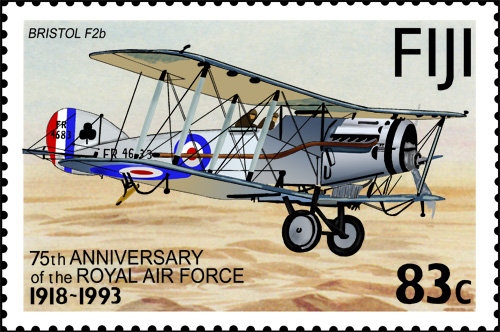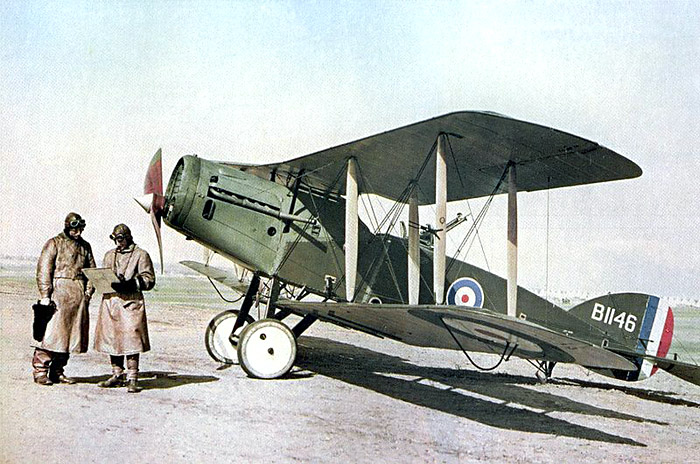|
|
||||
|
Bristol Fighter F.2B (Evaluation Aircraft, 1924-1934) |
||||
|
|
Page 1 (1) |
|||
|
|
||||
|
|
||||
|
|
||||
|
For the Model Builder Roden has produced a very fine plastic model kit of Bristol F.2B Fighter in scale 1/48. The kit contains decals for six different markings (British, Canadian and Australian). Catalouge number 425. Click on the thumbnail for larger image.
|
 |
|||
|
|
||||
| This stamp, depicting a Bristol F.2B Fighter, was issued by Fiji Islands in 1993. | ||||
|
|
||||
|
|
||||
|
A Bristol F.2B Fighter of No. 1
Squadron, Australian Flying Corps, in Palestine, February 1918.
The pilot (left) is Captain Ross Smith who
in 1919 was part of the crew that set the record for flying from England
to Australia. This aircraft has the common in-line
Rolls-Royce Falcon engine, not the radial Bristol Jupiter as on the single
Swedish Bristol Fighter. The photo is a colour Paget Plate created by Australian official war photographer, Frank Hurley.
A public domain photo
published at Wikimedia Commons. |
||||
|
|
||||
|
|
||||
| © Lars Henriksson |
Updated 2010-07-18 |
|||
|
|
||||


